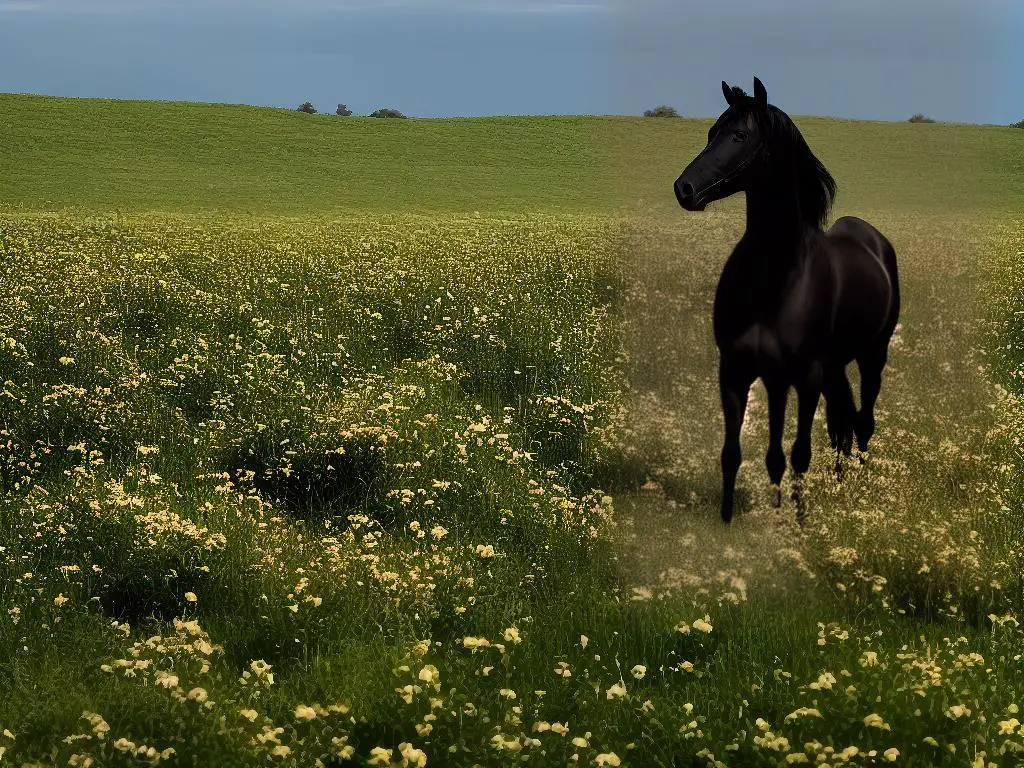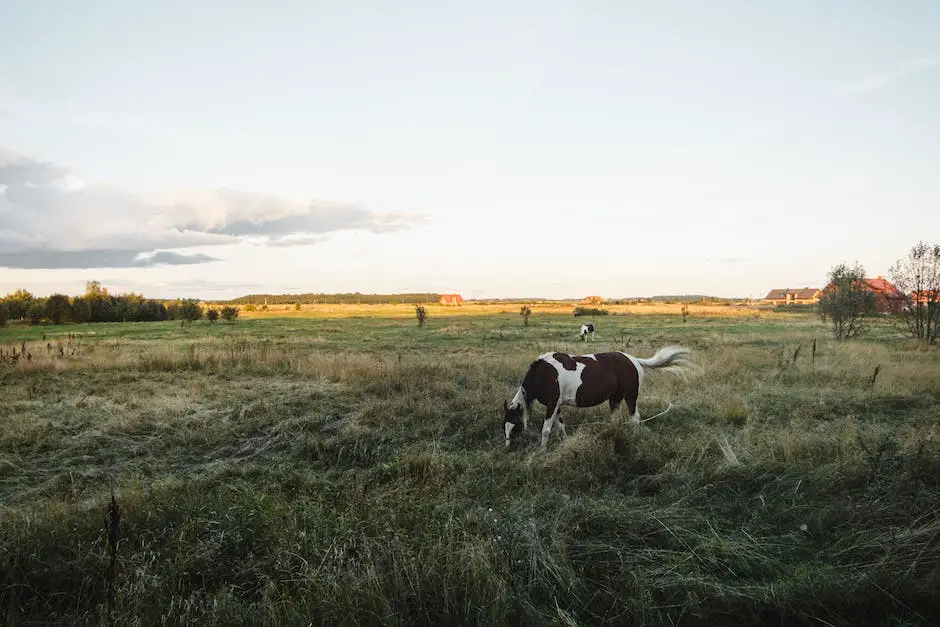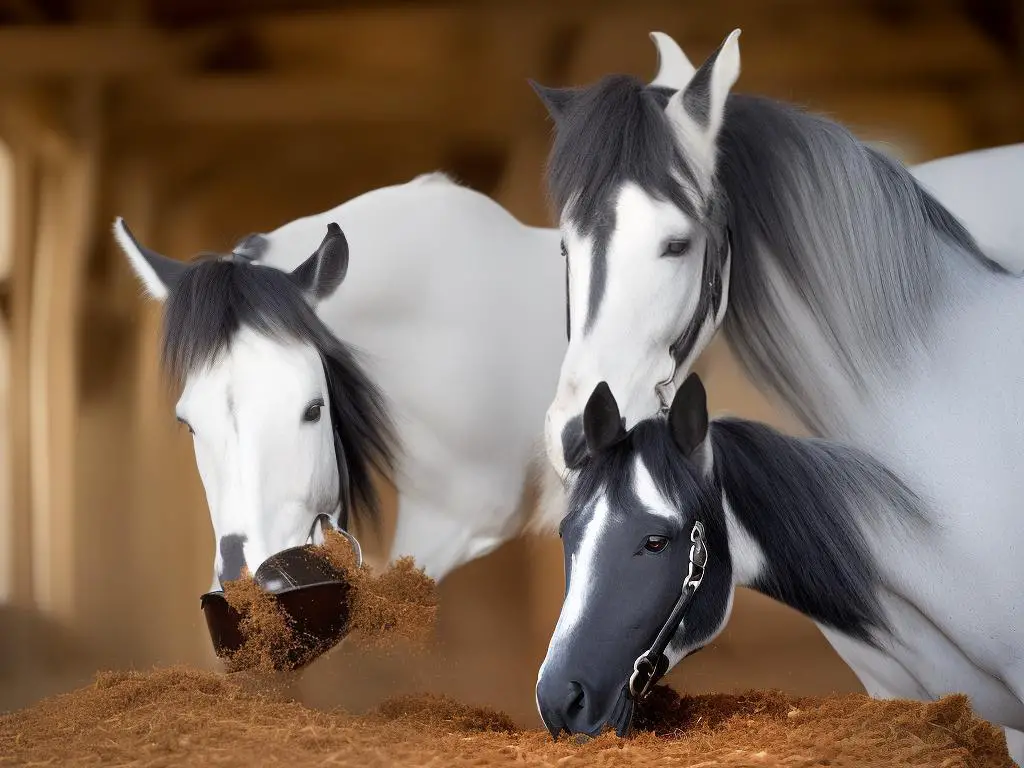Horses have been an integral part of human civilization, serving as companions, workers, and symbols of grace and power. Among the various breeds, the Percheron stands out due to its incredible strength, elegant stature, and captivating history. Originating from France, this muscular breed has spanned continents, playing various significant roles in agriculture, transportation, and sport disciplines. This exploration delves into the fascinating journey of the Percheron horse, its unique physical attributes, uses, care practices, and the indelible mark it has left in French and North American cultures.
Table of Contents (Horspedia)
Origins and History of the Percheron Horse
Origins: The Percheron Horse, a French Legacy
The Percheron horse breed hails from the province of Le Perche, nestled on the borders of Normandy and Maine in France. Its origins are shrouded in mystery, with some accounts attributing them to the Arab stallions brought over by the Moors around the 8th century. Regardless of their exact roots, this French breed has evolved into a robust, versatile horse known for its immense strength and hearty build.
Early History: A Warrior’s Steed
During medieval times, when knights needed strong yet agile horses, the Percheron proved to be a horse of choice. Its ability to navigate the challenging terrain of the French countryside, coupled with its stamina in warfare, led them to be favored by the knights. Over time, the Percheron’s war horse days transitioned into more peaceful roles, including farming and hauling freight, further showcasing their adaptability and endurance.
Development: Evolution of the Breed
As time went on, the Percheron breed saw considerable development to highlight and reinforce its key traits. The introduction of Arabian and Andalusian bloodlines in the 17th and 18th centuries enhanced the breed’s overall physique, adding to their stamina without compromising their power. The breed standard was officially set in 1893, establishing guidelines that have come to define the Percheron: a combination of muscular strength, broad chest, short back, and powerful limbs, covered in a smooth coat of often grey or black.
Global Recognition: Expansion to America
Much like human immigrants, the Percheron found a new home across the Atlantic, with the first of the breed arriving on American soil in 1839. By the early 20th century, the United States was the leading breeder globally thanks to their popularity among American farmers. They were favored for their ability to withstand rigorous work and harsh climates, making them a reliable choice for agricultural work.
Cultural Connection with France and North America
The Percheron’s cultural significance goes beyond being merely a breed of horse. In France, it is a symbol of the nation’s rich history, harking back to chivalrous knights and hardworking farmers. In the United States, it symbolizes the grit, determination, and work ethic that characterized early American settlers, making it a popular choice for transportation, farming, and later leisure.
The Percheron is a breed of draft horse that has profoundly influenced both French and American cultures. It is celebrated not only for its monumental role in agricultural progression and historical significance but also for the embodiment of honor and dedication that it represents.

Characteristics and Physical Features of Percheron Horses
Descriptive Features of Percheron Horses
Originally hailing from France, the Percheron is a renowned draft horse, globally recognized for its strength, versatility, and multi-dimensional functionality in various lines of work – from farming to logging, and transportation.
Majestic in size, a typical Percheron stallion stands anywhere between 16.1 to 18.1 hands high (65 to 73 inches tall) and carries a weight of roughly 1,800 to 2,600 pounds. Yet, the presence of such brawn does not impede their elegance and graceful movement. The females, or mares, although slightly smaller in size, are mightily impressive in their stature.
Characterized by a muscular build, voluminous chest, and a strong, compact back, Percherons exhibit powerful, short, but very clean legs, underpinned by hard, compact hooves. They possess an appreciable bone structure, a linear profile, accompanied by an intelligent, large-scaled head.
Typically, Percherons can be seen bearing a gray or black coat. Variations in this respect may yield roan, sorrel, or chestnut Percherons. Their skin is replete with a thick coat that augments particularly in cold weather, adapting them perfectly to colder climates.
Their colossal size and matchless strength, paired with unwavering stamina, equip these multi-talented horses for challenging tasks that involve pulling significantly heavy loads over extensive distances.
Health and Lifespan of Percheron Horses
Percheron horses are known for their strong immunity and generally good health. On average, they live for 20 to 30 years, although some have been known to reach their mid-thirties – a notable lifespan for a larger breed.
Despite their overall robustness, Percherons, due to their large size, can become overweight if they don’t receive enough exercise or are overfed. This can put them at risk for laminitis, a painful inflammation of the hooves, or Equine Metabolic Syndrome, which is comparable to human diabetes.
A more rare but severe health condition in Percherons is Junctional Epidermolysis Bullosa (JEB), a genetic disorder leading to extreme skin lesions. Affected foals usually need to be euthanized.
Regular health evaluations can help control these issues, along with proper exercise and a balanced diet. Weight management is crucial for their longevity and quality of life.
Despite a few health risks, the Percheron’s resilience and hardiness make them an outstanding candidate for various demanding roles.

Percheron Horse: Uses and Disciplines
The Historical Roles of Percheron Horses
The Percheron horse, a renowned draft breed, originates from France. These breathtaking creatures, distinguished by their immense strength and intellect, were initially bred for warfare. French knights of the Middle Ages relied on them to bear the burden of their heavy armor while exhibiting exceptional stamina under the most challenging conditions. However, with the dawn of the 19th century and the decline of knightly warfare, the Percheron horses found a new purpose in agriculture, transport, and timber hauling. Their strong physical constitution, willingness to work, and ability to withstand harsh weather made them an invaluable asset.
Percheron Horses in Agriculture and Transportation
During the industrial revolution, Percheron horses were the backbone of agriculture and transportation before the invention of automobiles and modern machinery. They were primarily used for plowing fields, hauling carts laden with goods, and pulling coaches or omnibuses in urban centers. In the United States, Percherons were the pioneers in settling the country’s western frontier, due to their incredible endurance and ability to withstand the harsh environment.
Percherons in Sport Disciplines
In modern times, the versatility of Percheron horses extends beyond labor-intensive tasks. They are used in different sport disciplines, such as driving, riding, and equine shows. Their powerful build is ideal for pulling heavy loads in driving competitions, while their calm and cooperative demeanor makes them suitable for under-saddle work in riding events.
Percheron Temperament and Suitability for Work
Percheron horses are renowned for their gentle and cooperative temperament which, coupled with their impressive strength, makes them highly sought after for various work settings. Their intelligence and inclination to learn quickly add to their desirability in both labor-intensive and sporting disciplines. Moreover, their calm demeanor allows them to work well in hectic environments, such as city streets or bustling showgrounds.
Modern Uses of Percheron Horses
In the contemporary era, the Percheron horse continues to excel in various roles, from agriculture and forestry to tourism and recreation. In agriculture, particularly in Amish communities, these horses are still relied upon for tilling fields and draft work. In logging operations, especially in eco-sensitive areas, Percherons are preferred over machinery due to their low environmental impact.
Percheron horses are popular in the tourism industry, most often found pulling carriages or sleighs in parks and historic districts. They also make appearances in various festive parades, representing the celebration of historic grandeur and strength. Percherons continue to participate in riding and driving competitions, showcasing their athleticism and adaptability, thus ensuring their legacy continues.
An Introduction to the Enduring Percheron Horse
The story of the Percheron horse speaks volumes about its resilience and versatility. From its early days gracing the fierce battlefields, to its contemporary roles in farming and show activities, the Percheron has proven its might and worth. Characterized by its striking balance of strength, intelligence, and a pleasantly mild temperament, it isn’t surprising this breed remains a favorite across various sectors today.

Caring for and Managing Percheron Horses
Nutrition and Diet of the Percheron Horse
The nutrition of a Percheron, a breed renowned for its immense size and strength, is central to its care. These sturdy horses need a well-planned diet to uphold their vitality and robust health. Their typical diet is comprised of grain, hay, grass, mineral blocks, salt and fresh, clean water.
Hay, ideally free from any toxic plants, should make up the bulk of their diet. When it comes to grain, options can vary between corn, oats, or barley. Fiber is also an essential element in a horse’s diet and should account for at least 1% of its body weight. The provision of salt and mineral blocks for horses to lick provides an excellent source of extra nutrients.
The specifics of the feeding plan—how much and when to feed—may hinge on a combination of factors such as the horse’s size, work demands, and the climate of its habitat. A consultation with an expert in equine nutrition or a veterinarian would be beneficial to tailor an appropriate feeding regimen.
Grooming Percheron Horses
Percheron horses take pleasure in being groomed. Regular brushing not only helps to keep the coat, mane, and tail looking clean, it also helps to distribute oils throughout the coat, which can assist in preventing skin issues.
Due to the Percheron’s size, they are prone to having more sweat glands. As a result, they must be shampooed and rinsed thoroughly. It is also fundamental to check their hooves daily, cleaning out any dirt or stones to prevent hoof-related diseases.
Housing Percheron Horses
Percherons, due to their large size, require sufficient space. They typically need a stable with plenty of room to move around, as well as a large pasture for grazing and exercise. The stable should be dry, well-lit, and ventilated, with clean and comfortable bedding.
Fencing must be sturdy enough to contain the horse securely without injuring it, especially because of their strength. Regularly clean and disinfect the stables to keep pests at bay and prevent diseases.
Exercise Requirements
Regular exercise is essential for these muscular horses. Whether it’s pulling weight, riding, or simply free-roaming around the pasture, they need to stay active to keep their bodies and minds healthy.
Though they’re naturally hardy and robust, overexertion can lead to health complications. So, balance is key in their exercise regimen. It’s also important to properly warm up and cool down the horse to prevent injuries.
Special Needs and Considerations
Due to their considerable size, Percheron horses may require specialized equipment. Larger tack, halters, and farrier equipment are often needed. Their size also means they can be more prone to certain health issues, like laminitis and other hoof problems. Regular check-ups by a veterinarian are critical in early detection and treatment of any potential health concerns.
Finally, the Percheron’s calm and gentle temperament makes them simple to handle, but like all horses, they still benefit from consistent, positive training methods. This helps not only with immediate care and management but also ensures they can interact safely with humans and other horses.

Understanding the Percheron horse’s origins, their impressive abilities, and the roles they’ve played in history, we inarguably gain deep respect for this extraordinary breed. Not only does the Percheron encapsulate strength and endurance, but they also exhibit a gentle, compliant temperament, making them treasured companions. Meanwhile, they demonstrate remarkable versatility, serving in numerous disciplines spanning from agricultural works to sports and leisure activities. Caring for the Percheron horse also demands a certain degree of knowledge and commitment due to their specific needs. However, the love and loyalty they reciprocate make every effort worthwhile, indeed cementing the Percheron’s status as an enduring symbol of majesty and hardiness.
